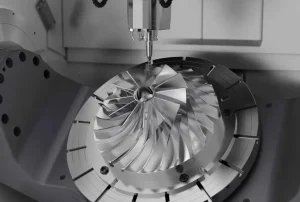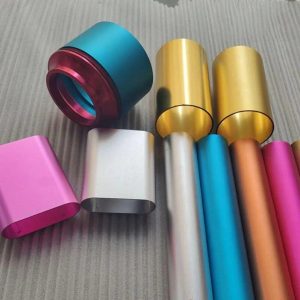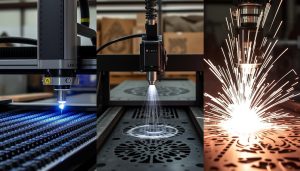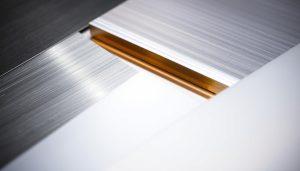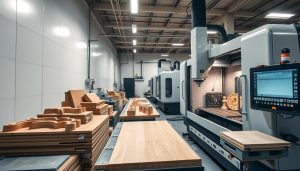In the world of metalworking, annealed metal is a crucial component that plays a vital role in various industries. Annealing is a heat treatment process that transforms the structure and properties of metals, enhancing their workability and durability. By understanding the significance of annealed metal, manufacturers, engineers, and designers can unlock new possibilities in their respective fields, leading to innovative solutions and improved product performance.
The annealing process involves heating the metal to a specific temperature, holding it at that temperature for a certain duration, and then slowly cooling it. This controlled heating and cooling cycle alters the metal’s microstructure, reducing internal stresses and increasing its ductility and malleability. The transformation that occurs during annealing allows metals to be more easily shaped, formed, and manipulated, making them better suited for a wide range of applications.
Key Takeaways
- Annealing is a heat treatment process that enhances the properties of metals, making them more workable and durable.
- Annealed metal exhibits increased ductility and malleability, reduced brittleness and internal stresses.
- Understanding the benefits of annealed metal is crucial for industries such as manufacturing, automotive, aerospace, and electronics.
- Annealing can be applied to a variety of metals, including ferrous and non-ferrous alloys, to improve their overall performance.
- The annealing process plays a vital role in the metalworking industry, enabling the creation of high-quality, reliable metal parts and components.
The Annealing Process Explained
Annealing is a crucial process in metal fabrication that transforms the properties of metals by carefully controlled heating and cooling. This technique has been extensively used in metalworking for centuries, and its importance cannot be overstated. Let’s delve deeper into the intricacies of the annealing process and understand its impact on metal characteristics.
What is Annealing in Metal?
Annealing is the process of heating a metal to a specific temperature, holding it at that temperature for a predetermined duration, and then slowly cooling it. This controlled heat treatment alters the metal’s molecular structure, resulting in changes to its physical and mechanical properties. The goal of annealing is to increase the metal’s ductility, malleability, and overall workability, making it easier to shape and manipulate during metalworking operations.
How Does Annealing Improve Metal Properties?
At the molecular level, annealing induces several beneficial changes in the metal’s structure. During the heating phase, the metal’s crystalline structure becomes more uniform, reducing internal stresses and defects. This redistribution of atoms allows the metal to become more pliable and less brittle. The subsequent slow cooling process further enhances the metal’s ductility, making it more resistant to cracking or breaking during forming and shaping processes.
The Role of Heat Treatment in Metalworking
Heat treatment, of which annealing is a crucial part, plays a pivotal role in the world of metalworking. By carefully controlling the temperature, duration, and cooling rate, metalworkers can tailor the metal’s properties to suit specific applications. Annealing is just one of several heat treatment techniques, each designed to achieve different outcomes, such as increased strength, improved corrosion resistance, or enhanced surface hardness.
“Proper heat treatment is essential for achieving the desired characteristics in a metal part. Annealing is a fundamental step in ensuring the workability and long-term performance of a wide range of metal products.”
Benefits of Annealed Metal
Annealed metal offers a multitude of advantages that make it a preferred choice in various manufacturing and fabrication processes. From enhanced ductility and malleability to reduced brittleness and durability, annealed metal delivers distinct benefits that can elevate the performance and longevity of the final product.
Increased Ductility and Malleability
One of the primary advantages of annealed metal is its increased ductility and malleability. The annealing process softens the metal, allowing it to be easily bent, shaped, and worked without the risk of cracking or breaking. This enhanced formability is particularly valuable in applications where complex shapes, intricate designs, or tight tolerances are required.
Reduced Brittleness and Stress
Annealed metal also exhibits reduced brittleness and internal stresses, which can significantly improve the overall workability and durability of the material. By relieving these built-up stresses, annealing helps prevent the formation of cracks, deformation, and other undesirable defects during manufacturing and use.
Enhanced Workability and Durability
The combination of increased ductility, malleability, and reduced brittleness in annealed metal translates to enhanced workability and overall durability. This makes annealed metal an ideal choice for a wide range of applications, from automotive components and aerospace parts to consumer electronics and everyday household items. The improved workability ensures efficient and precise fabrication, while the enhanced durability extends the lifespan of the final product.
| Benefit | Description |
|---|---|
| Increased Ductility and Malleability | Annealed metal is more easily bent, shaped, and worked without the risk of cracking or breaking, making it ideal for complex designs and tight tolerances. |
| Reduced Brittleness and Stress | Annealing helps relieve internal stresses, preventing the formation of cracks, deformation, and other defects during manufacturing and use. |
| Enhanced Workability and Durability | The improved ductility, malleability, and reduced brittleness of annealed metal result in enhanced workability and increased durability of the final product. |

Embracing the benefits of annealed metal can significantly enhance the performance and longevity of a wide range of products, from automotive components to consumer electronics. By leveraging the increased ductility, malleability, and workability of annealed metal, manufacturers can achieve superior durability and meet the evolving demands of their industries.
Common Applications of Annealed Metal
Annealed metal, with its enhanced ductility, malleability, and workability, finds a diverse range of applications across various industries. From manufacturing and fabrication to automotive and aerospace, the unique properties of annealed metal make it an invaluable material in shaping modern products and technologies.
Use in Manufacturing and Fabrication
In the manufacturing sector, annealed metal is extensively used for its superior formability and ease of machining. Annealed steel, copper, and aluminum are commonly employed in stamping, bending, and shaping processes to create intricate components and parts. The increased malleability of annealed metal allows for complex geometries and precise tolerances, making it a preferred choice for diverse manufacturing applications.
Role in Automotive and Aerospace Industries
The automotive and aerospace industries heavily rely on annealed metal for their structural and functional components. Annealed steel is utilized in the production of body panels, chassis parts, and engine components, providing the necessary strength and flexibility for improved safety and performance. Similarly, annealed aluminum alloys are widely used in aircraft and spacecraft construction, leveraging their lightweight yet durable properties to enhance fuel efficiency and overall aircraft performance.
Applications in Electronics and Consumer Goods
Annealed metal also plays a crucial role in the electronics and consumer goods sectors. Annealed copper is extensively used in the manufacturing of electrical wiring and circuit boards, owing to its enhanced conductivity and bendability. Furthermore, annealed metal components are found in a variety of consumer products, from household appliances to personal electronics, where their durability and formability contribute to the overall quality and design of the final products.
| Industry | Annealed Metal Applications |
|---|---|
| Manufacturing and Fabrication | Stamping, bending, shaping of components and parts |
| Automotive | Body panels, chassis parts, engine components |
| Aerospace | Aircraft and spacecraft construction |
| Electronics | Electrical wiring, circuit boards |
| Consumer Goods | Household appliances, personal electronics |
From the manufacturing floor to the aerospace industry and beyond, the versatility and performance-enhancing properties of annealed metal make it an indispensable material in modern product development and construction.

Types of Metals That Can Be Annealed
Annealing is a versatile heat treatment process that can be applied to a wide range of metals, including both ferrous and non-ferrous varieties. Each type of metal has unique characteristics that respond differently to the annealing process, making it an essential technique in metalworking.
Ferrous vs Non-Ferrous Metals
Ferrous metals, such as steel, are those that contain iron as the primary component. These metals often exhibit high strength and hardness, but can also become brittle over time. Annealing helps to increase the ductility and malleability of ferrous metals, making them easier to work with during fabrication and manufacturing processes.
On the other hand, non-ferrous metals, like copper and aluminum, do not contain iron. These metals are generally more lightweight and corrosion-resistant, and the annealing process helps to enhance their workability and durability.
Annealing of Steel, Copper, and Aluminum
- Steel annealing is a crucial step in the production of various steel products, from automotive components to construction materials. The process helps to relieve internal stresses, improve machinability, and restore the metal’s ductility.
- Copper annealing is essential for maintaining the metal’s malleability and electrical conductivity, making it a valuable material in the electronics and electrical industries.
- Aluminum annealing enhances the metal’s formability, reducing the risk of cracking or tearing during fabrication. This process is particularly important for the automotive and aerospace sectors, where lightweight and durable materials are in high demand.
By understanding the unique properties of ferrous and non-ferrous metals, and the specific benefits of annealing for each type, metalworkers can optimize their production processes and create high-quality, reliable products that meet the demands of diverse industries.
Shixinproto Fast and Reliable Turnaround for Your Metal Parts
When it comes to manufacturing high-quality metal parts, Shixinproto stands out as a trusted partner. With years of expertise in working with annealed metals, this leading provider delivers a fast and reliable turnaround on all your metal parts production needs.
At Shixinproto, we understand the importance of timely and consistent delivery. That’s why we’ve streamlined our processes to ensure your metal parts manufacturing projects are completed with precision and efficiency. Whether you require annealed steel, copper, or aluminum components, our team of skilled technicians is ready to bring your vision to life.
Choosing Shixinproto means you can trust in our commitment to fast turnaround and reliable service. We prioritize open communication, flexible scheduling, and meticulous quality control to exceed your expectations every step of the way. Experience the difference that a dedicated partner can make in your metal parts production journey.
